- Recognizing Edible Honeysuckle Varieties
- Edible Honeysuckle Varieties
- Identifying Edible Honeysuckle Plants
- Cautions and Considerations
- Identifying Poisonous Honeysuckle Species
- Lonicera japonica
- Lonicera maackii
- Additional Considerations
- Characteristics of Edible Honeysuckle
- Characteristics of Poisonous Honeysuckle
- Cultivating Edible Honeysuckle in Your Garden
- 1. Choosing the Right Species
- 2. Planting
- 3. Providing Support
- 4. Watering and Fertilizing
- 5. Pruning
- 6. Harvesting and Using
- Using Edible Honeysuckle for Culinary Purposes
- Culinary Uses of Edible Honeysuckle:
- Benefits of Using Edible Honeysuckle:
- Where to Find Edible Honeysuckle:
- Medical Uses of Edible Honeysuckle
- 1. Antioxidant Properties
- 2. Anti-Inflammatory Effects
- 3. Immune System Support
- 4. Digestive Health
- 5. Skin Health
- 6. Eye Health
- 7. Heart Health
- Precautions and Risks of Consuming Poisonous Honeysuckle
- Question-answer:
- What is the difference between edible and poisonous honeysuckle?
- How can I identify edible honeysuckle from poisonous honeysuckle?
- Are all honeysuckle berries safe to eat?
- What are some common edible honeysuckle species?
- Can honeysuckle be used for medicinal purposes?
- Where can I find honeysuckle plants?
- Video: Japanese Honeysuckle: Wild Edible & Medicinal: (Tagged!)
Honeysuckle is a beautiful and fragrant plant that is known for its edible nectar and attracting pollinators. However, not all honeysuckle species are safe to consume. It is important to know the difference between edible and poisonous honeysuckle in order to avoid any potential health risks.
One of the most common edible honeysuckle species is Lonicera japonica, also known as Japanese honeysuckle. This species is characterized by its white or yellow flowers that change to a deep yellow color as they age. The flowers of Japanese honeysuckle have a sweet and aromatic nectar that can be enjoyed straight from the plant or used to flavor drinks and desserts.
On the other hand, there are several species of honeysuckle that are considered poisonous. One such species is Lonicera involucrata, also known as twinberry honeysuckle. This species has small, red or black berries that are toxic to humans and should not be consumed. It is important to be able to identify the specific characteristics of each species in order to avoid any confusion.
In addition to being aware of the different species of honeysuckle, it is also important to know how to properly utilize the edible varieties. The flowers of edible honeysuckle can be harvested and used in a variety of culinary creations. They can be used to make honeysuckle syrup, infused honeysuckle vinegar, or even added to salads and teas for a unique flavor. Additionally, the leaves of some edible honeysuckle species can be used to make a refreshing tea that is said to have medicinal properties.
In conclusion, understanding the difference between edible and poisonous honeysuckle is crucial for anyone interested in utilizing this beautiful and fragrant plant. By familiarizing yourself with the specific characteristics of each species and learning how to properly utilize the edible varieties, you can safely enjoy the delightful flavors and benefits of honeysuckle.
Recognizing Edible Honeysuckle Varieties
Honeysuckle plants belong to the Caprifoliaceae family and have been used for centuries for their medicinal and culinary properties. While some species of honeysuckle are edible and offer a range of health benefits, others can be potentially toxic if ingested.
Edible Honeysuckle Varieties
Here are a few varieties of honeysuckle that are known to be edible:
- Lonicera caerulea: Also known as the blue honeysuckle or honeyberry, this variety produces small, blue-colored berries that are sweet and tart in flavor. Honeyberries are packed with antioxidants and vitamin C.
- Lonicera japonica: Commonly referred to as Japanese honeysuckle, this variety is known for its sweet and fragrant white flowers. It is often used in teas, syrups, and desserts.
- Lonicera xylosteum: Also known as European fly honeysuckle, this variety produces red berries that are slightly sweet and acidic. The berries can be eaten raw or used in jams and jellies.
Identifying Edible Honeysuckle Plants
When foraging for edible honeysuckle, it’s important to properly identify the plants to ensure you are not consuming any toxic varieties. Here are some key characteristics to look for when identifying edible honeysuckle plants:
- Flowers: Edible varieties of honeysuckle typically have fragrant flowers that come in various colors, including white, yellow, pink, and purple.
- Berries: The berries of edible honeysuckle plants are usually small and range in color from blue to red. They are often sweet and tart in flavor.
- Leaves: Edible honeysuckle plants usually have opposite leaves that are elongated or ovate in shape. The leaves may be dark green or bluish-green in color.
- Vines and Stems: Edible honeysuckle plants are typically climbers, with long, twining vines or arching stems. The stems may be woody or herbaceous.
Cautions and Considerations
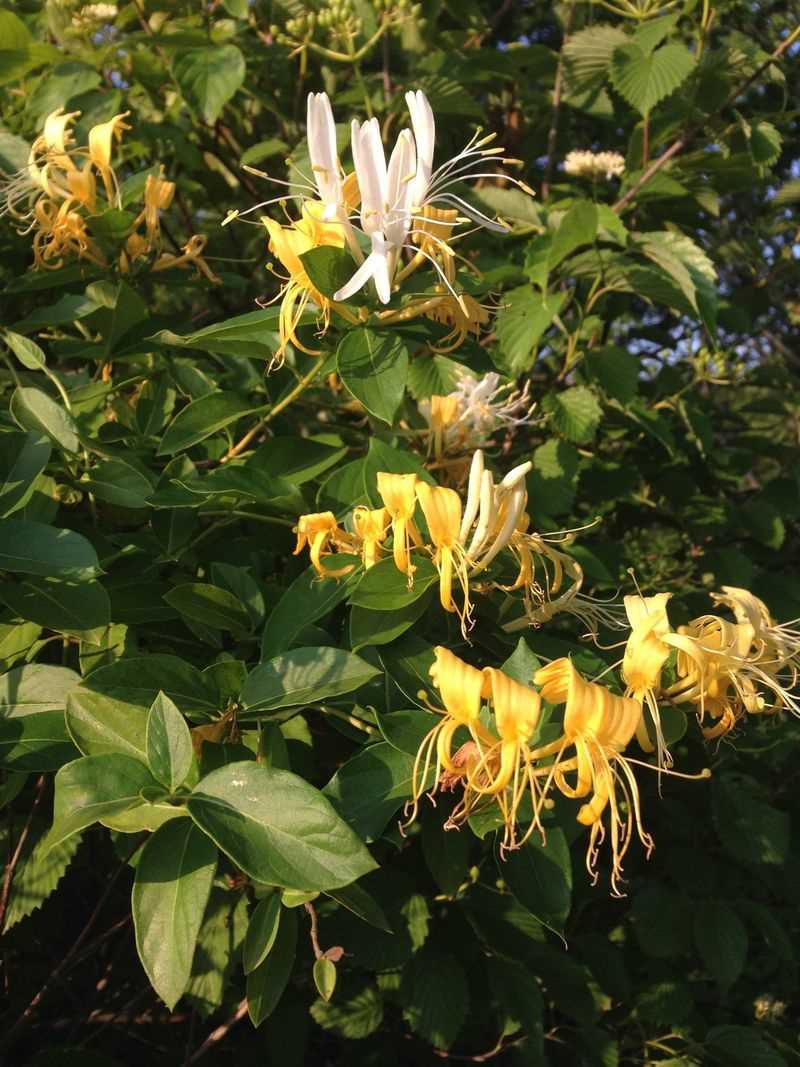
While these varieties of honeysuckle are generally recognized as safe for consumption, it’s important to use caution when consuming any wild plants. Some individuals may have allergic reactions to honeysuckle, and there is always the risk of misidentification. If you are unsure about the edible nature of a honeysuckle plant, it’s best to consult a knowledgeable expert before consuming any part of the plant.
Additionally, avoid consuming honeysuckle plants that have been exposed to pesticides or other chemicals, as these can be harmful to human health.
| Honeysuckle Variety | Flower Color | Berry Color | Flavor |
|---|---|---|---|
| Lonicera caerulea | White, yellow, pink, purple | Blue | Sweet and tart |
| Lonicera japonica | White | N/A | Fragrant |
| Lonicera xylosteum | White, yellow | Red | Slightly sweet and acidic |
Identifying Poisonous Honeysuckle Species
While honeysuckle plants are often recognized for their beautiful flowers and sweet scent, it is important to be aware that certain species of honeysuckle can be poisonous if ingested. Identifying these poisonous species is crucial to ensure your safety when foraging or utilizing honeysuckle plants.
Lonicera japonica
Lonicera japonica, commonly known as Japanese honeysuckle, is one species that can be toxic if consumed in large quantities. It is an invasive species that is widespread in North America. The leaves of Japanese honeysuckle are elliptical in shape, oppositely arranged along the stem, and have a dark green color. The flowers are white or pale yellow and have a pleasant fragrance.
However, despite its attractive appearance, consuming large amounts of Lonicera japonica berries can cause nausea, vomiting, and diarrhea. Therefore, it is best to avoid ingesting this species.
Lonicera maackii
Lonicera maackii, also known as Amur honeysuckle, is another species that should be avoided as it can be toxic. This invasive shrub is common in North America and is often found in woodland areas. The leaves of Amur honeysuckle are oval-shaped, opposite in arrangement, and have a dark green color. The flowers are white or pink and have a mild fragrance.
While birds and other wildlife may consume the berries of Lonicera maackii without any issues, humans should exercise caution as they can cause digestive discomfort when ingested.
Additional Considerations
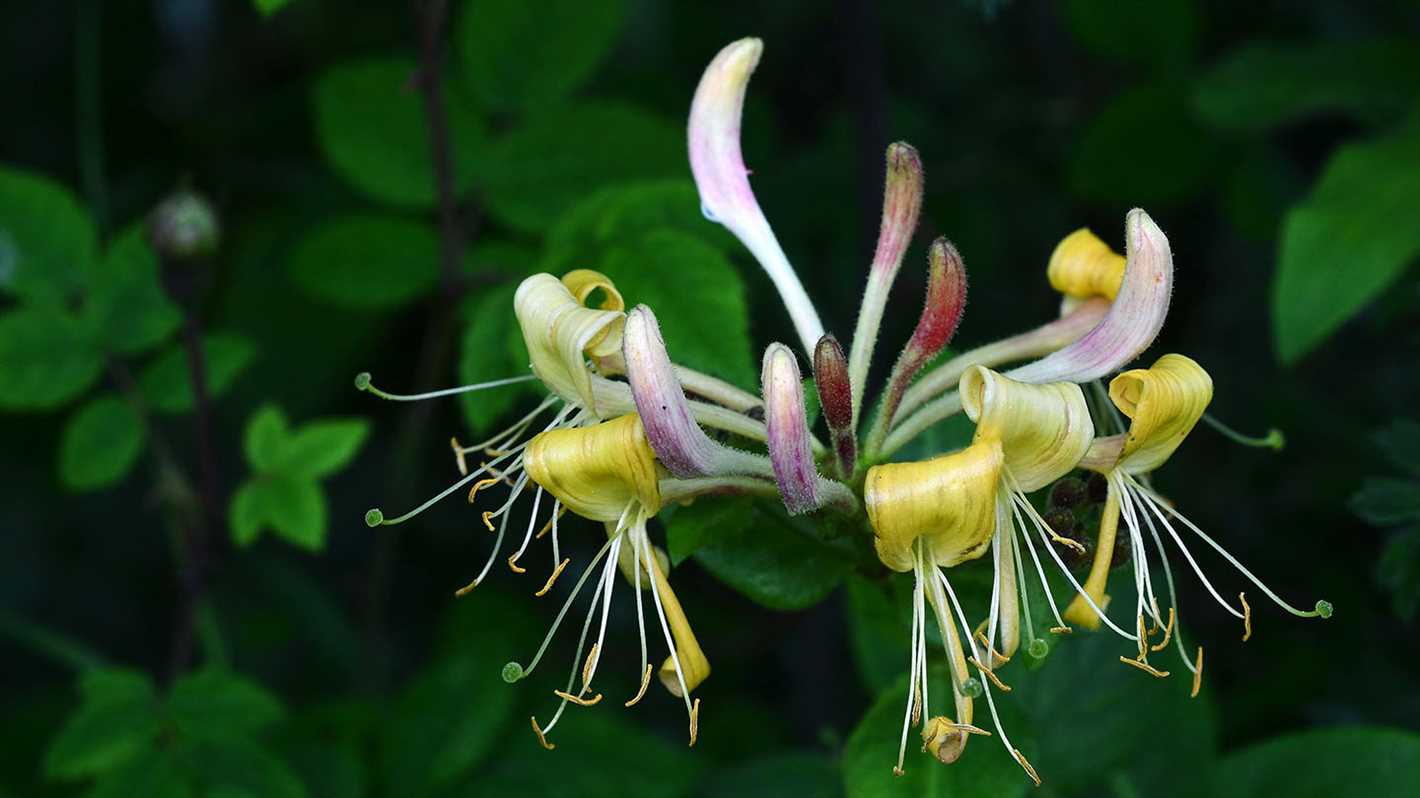
When identifying honeysuckle species, it is important to consult reliable botanical sources or seek guidance from experts to ensure accuracy. Sometimes, differentiating between edible and poisonous species can be challenging, and misidentification can lead to potential health risks.
If you are unsure about the identification of a honeysuckle plant or have any doubts about its safety for consumption, it is best to avoid consuming it altogether. Stick to well-known edible varieties such as Lonicera caerulea (honeyberry) or consult with a local foraging expert for further guidance.
| Species | Common Name | Characteristics | Toxicity |
|---|---|---|---|
| Lonicera japonica | Japanese honeysuckle | Elliptical leaves, white or pale yellow flowers | Toxic if consumed in large quantities |
| Lonicera maackii | Amur honeysuckle | Oval-shaped leaves, white or pink flowers | Toxic when ingested |
Characteristics of Edible Honeysuckle
- Diversity: Edible honeysuckle, also known as honeyberry or blue honeysuckle, belongs to the Lonicera genus and encompasses several species. The most common edible species include Lonicera caerulea, Lonicera edulis, and Lonicera kamtschatica.
- Growth habit: Edible honeysuckle is a deciduous shrub that grows up to 6 feet tall. It has an upright growth habit with multiple stems and a spreading, bushy appearance. The shrub produces abundant foliage and flowers in spring.
- Leaves: The leaves of edible honeysuckle are opposite, simple, and ovate. They are dark green in color and have a smooth texture. The leaves provide an attractive backdrop to the flowering stems.
- Flowers: Edible honeysuckle blooms in spring, usually between April and June. The flowers are small, tubular, and typically white or cream-colored. They are grouped together in clusters and have a pleasant, sweet fragrance.
- Fruits: The main attraction of edible honeysuckle is its fruits, which resemble elongated blueberries or small plums. The fruits are edible and have a unique flavor that combines sweetness and tartness. They are rich in antioxidants and vitamins.
- Harvesting: The fruits of edible honeysuckle ripen in early summer, typically in June or July. They should be harvested when fully mature and have a deep blue color. The fruits are easily detachable from the stem and can be collected by hand.
- Uses: Edible honeysuckle can be enjoyed fresh or used in a variety of culinary applications. The fruits can be eaten raw, added to salads, smoothies, or desserts, or used for making jams and preserves. They can also be dried and used as a flavoring ingredient.
- Cultivation: Edible honeysuckle is a hardy plant that can tolerate a wide range of growing conditions. It prefers full sun to partial shade and well-drained soil. It can withstand cold temperatures and is suitable for growing in USDA hardiness zones 2-7. Regular pruning helps maintain the shape and productivity of the shrub.
- Health benefits: In addition to its delicious taste, edible honeysuckle offers various health benefits. It is rich in antioxidants, which can help protect against oxidative stress and inflammation. The fruits also contain vitamins C and E, as well as minerals like potassium and manganese.
Characteristics of Poisonous Honeysuckle
- Toxic compounds: Poisonous honeysuckle species contain various toxic compounds, such as saponins, cyanogens, and glycosides. These substances can cause adverse effects on human health if consumed.
- Leaf structure: Poisonous honeysuckle species typically have elongated, elliptical leaves with smooth edges. The leaves may appear dark green in color.
- Flower color: The flowers of poisonous honeysuckle species often have bright red, orange, or yellow colors. However, it’s important to note that there are also edible honeysuckle species with similar flower colors, so color alone is not a definitive characteristic for identifying poisonous honeysuckle.
- Berries: Poisonous honeysuckle berries are usually small, round, and shiny. They can range in color from red to black. It’s important to avoid consuming these berries as they can be toxic.
- Growth habit: Poisonous honeysuckle species typically have a sprawling or climbing growth habit, with vines that can attach themselves to nearby structures or plants.
- Unpleasant odor and taste: Poisonous honeysuckle species may have an unpleasant odor and taste. The smell can be pungent or musky.
- Environment: Poisonous honeysuckle species can be found in various habitats, including woodlands, fields, and gardens. They often have a broad range of tolerance to different soil types and environmental conditions.
If you come across a honeysuckle plant with these characteristics, it’s advisable to exercise caution and avoid consuming any part of the plant. It’s always important to properly identify the species of honeysuckle before using it for culinary or medicinal purposes.
Cultivating Edible Honeysuckle in Your Garden
Honeysuckle is a beautiful and fragrant flowering vine that can also be a delicious addition to your garden. By cultivating edible honeysuckle, you can enjoy its sweet nectar and use it in various culinary creations. Here are some tips for successfully growing and utilizing edible honeysuckle in your own garden:
1. Choosing the Right Species
There are several species of honeysuckle, but not all of them are edible. The most common edible species are Lonicera japonica and Lonicera caerulea. Make sure to do your research and purchase the correct species for your garden.
2. Planting
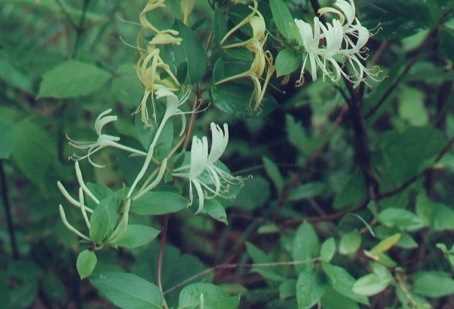
Honeysuckle can be grown from seeds or cuttings. If you choose to plant from seeds, make sure to soak them in water overnight before planting. Choose a sunny location with well-draining soil for your honeysuckle vine. Dig a hole twice as wide and deep as the root ball, place the plant in the hole, and cover it with soil. Water thoroughly after planting.
3. Providing Support
Honeysuckle is a vine that needs support to grow and climb. Install a trellis, fence, or other support system for your honeysuckle vine to grow and spread. Make sure to provide enough space for the vine to climb and spread its fragrant blooms.
4. Watering and Fertilizing
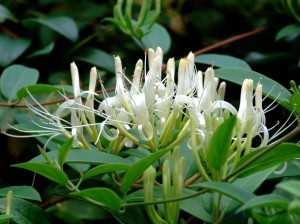
Keep the soil consistently moist, but not waterlogged. Water your honeysuckle vine regularly, especially during dry periods. Use a balanced fertilizer, such as a 10-10-10 formula, to promote healthy growth. Follow the instructions on the fertilizer package for application rates.
5. Pruning
Regular pruning is necessary to keep your honeysuckle vine healthy and manageable. Prune in late winter or early spring before the new growth starts. Remove any dead or damaged branches and shape the vine as desired. This will also help promote better air circulation and prevent diseases.
6. Harvesting and Using
Once your honeysuckle vine is established and flowering, you can start harvesting the edible blooms. The flowers can be used in various culinary applications, such as making herbal teas, syrups, or infused oils. The sweet nectar can also be enjoyed directly by sucking it out of the flowers. Just make sure to only consume honeysuckle species that are known to be edible.
By following these tips, you can successfully cultivate edible honeysuckle in your garden and enjoy its beautiful blooms and sweet flavors. Just remember to do your research and obtain the correct species, provide proper care and support, and harvest responsibly. Happy gardening!
Using Edible Honeysuckle for Culinary Purposes
Honeysuckle is a versatile plant that can be used for various culinary purposes. The edible species of honeysuckle, such as Lonicera japonica and Lonicera caerulea, have a deliciously sweet flavor that can enhance a wide range of dishes.
Culinary Uses of Edible Honeysuckle:
- Beverages: Edible honeysuckle can be used to make flavorful and refreshing beverages. The berries can be juiced and used to create juices, smoothies, and cocktails.
- Desserts: The sweet taste of edible honeysuckle berries makes them a perfect addition to desserts. They can be used to create jams, jellies, pies, tarts, and even ice creams.
- Sauces: Edible honeysuckle can be used to make delicious sauces that pair well with both sweet and savory dishes. The berries can be cooked down and strained to create a smooth sauce that can be drizzled over desserts or used as a glaze for meats.
- Syrups: Edible honeysuckle berries can also be used to make syrups that can be used to sweeten various dishes and beverages. The syrup can be infused with additional flavors such as herbs or spices to create unique and delicious combinations.
Benefits of Using Edible Honeysuckle:
In addition to their delicious flavor, edible honeysuckle berries also offer various health benefits. They are rich in antioxidants, vitamin C, and other nutrients that can support a healthy immune system and provide anti-inflammatory properties. Additionally, edible honeysuckle berries have been found to have potential anti-cancer properties.
Where to Find Edible Honeysuckle:
Edible honeysuckle can be found growing in various regions around the world. They are commonly cultivated in gardens and can also be found growing wild in certain areas. It is important to properly identify the species of honeysuckle before consuming it to ensure that it is safe for consumption.
| Scientific Name | Common Name | Description |
|---|---|---|
| Lonicera japonica | Japanese honeysuckle | A climbing vine with white or yellow flowers and black berries. |
| Lonicera caerulea | Blue honeysuckle | A shrub-like plant with blue or purple berries. |
When foraging for edible honeysuckle, it is important to avoid the poisonous species, such as Lonicera maackii and Lonicera tatarica, which have toxic properties. Thoroughly research and consult reliable sources to ensure safe identification of edible honeysuckle species.
In conclusion, edible honeysuckle is a versatile and delicious ingredient that can be used in a variety of culinary creations. Whether used in beverages, desserts, sauces, or syrups, the sweet flavor of edible honeysuckle can add a delightful touch to any dish. Just remember to properly identify the species before consumption to ensure safety.
Medical Uses of Edible Honeysuckle
Edible honeysuckle, also known as honeyberry or haskap, is a type of honeysuckle that is not only delicious but also has a number of potential medical uses. Here are some of the ways in which edible honeysuckle can be used for health benefits:
1. Antioxidant Properties
Edible honeysuckle berries are rich in antioxidants, which can help protect the body from damage caused by harmful free radicals. These antioxidants may reduce the risk of chronic diseases, such as heart disease and certain types of cancer.
2. Anti-Inflammatory Effects
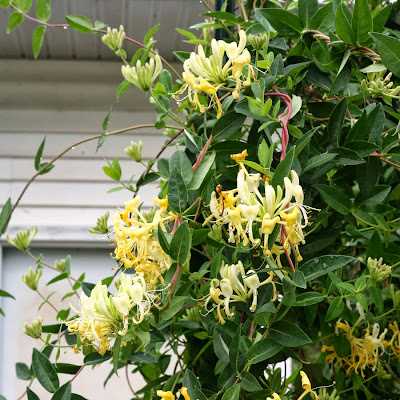
Studies have shown that edible honeysuckle extract possesses anti-inflammatory properties. It may help reduce inflammation in the body, which is a common cause of various health issues, including arthritis, heart disease, and certain types of cancer.
3. Immune System Support
The high vitamin C content in edible honeysuckle berries can support the immune system and help the body fight off infections. It may also have a positive effect on overall immune function, strengthening the body’s defenses.
4. Digestive Health
Consuming edible honeysuckle may promote digestive health. It contains dietary fiber, which can help regulate bowel movements and prevent constipation. The berries may also have soothing properties that can alleviate digestive discomfort.
5. Skin Health
Edible honeysuckle berries are a good source of vitamins A and C, which are essential for maintaining healthy skin. These vitamins can help improve the skin’s appearance, promote collagen production, and protect against damage caused by UV radiation.
6. Eye Health
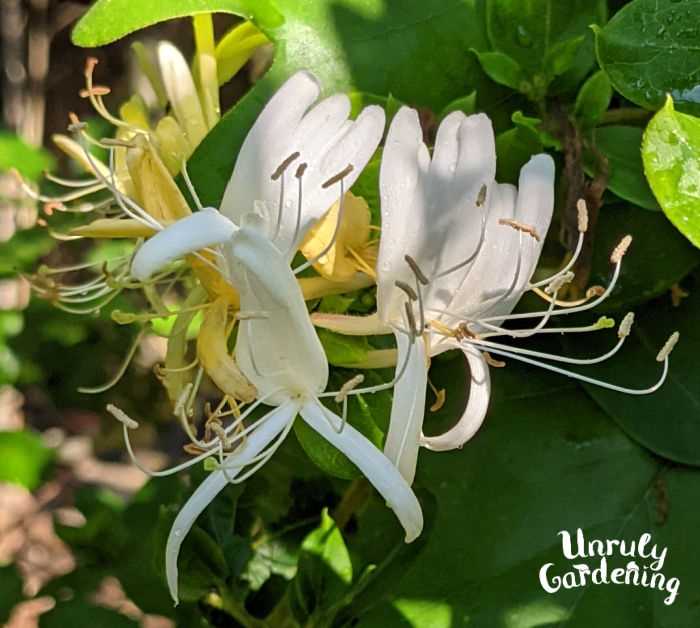
The antioxidants found in edible honeysuckle berries, such as lutein and zeaxanthin, are beneficial for eye health. They may help reduce the risk of age-related macular degeneration and cataracts.
7. Heart Health
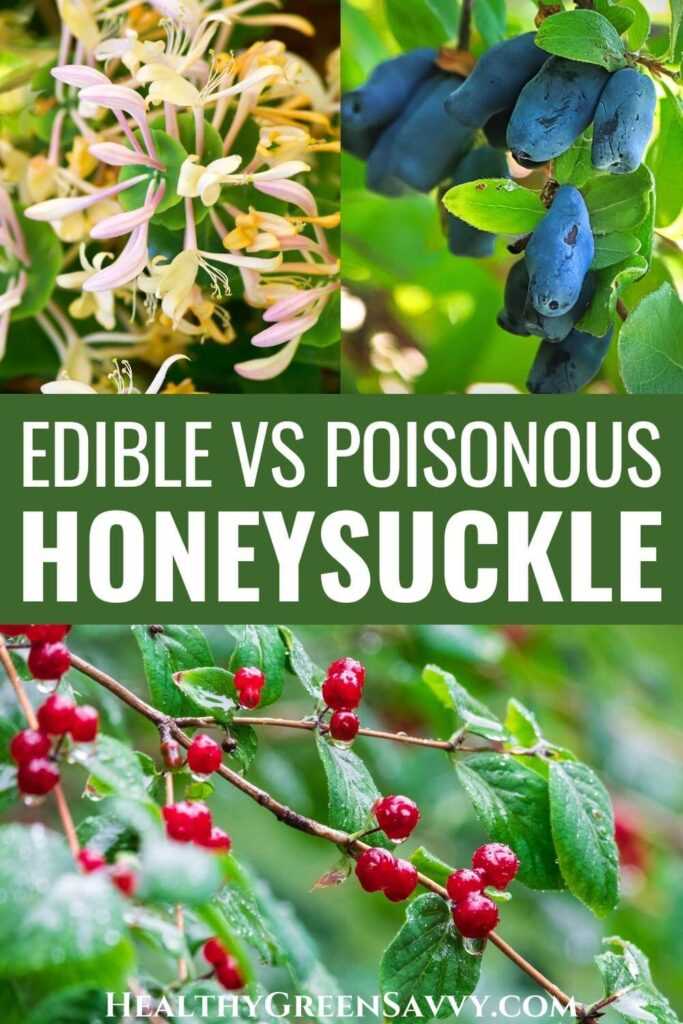
Some studies suggest that the compounds found in edible honeysuckle extract may help reduce cholesterol levels and improve heart health. They may also have a positive effect on blood pressure and blood sugar levels.
| Medical Uses | Benefits |
|---|---|
| Antioxidant Properties | Protects against free radical damage |
| Anti-Inflammatory Effects | Reduces inflammation in the body |
| Immune System Support | Strengthens the immune system |
| Digestive Health | Promotes regular bowel movements |
| Skin Health | Improves skin’s appearance and protection |
| Eye Health | Reduces the risk of age-related eye diseases |
| Heart Health | Improves cholesterol levels and blood pressure |
Please note that while edible honeysuckle may offer potential health benefits, it is always important to consult with a healthcare professional before using it as a medical treatment or supplement.
Precautions and Risks of Consuming Poisonous Honeysuckle
While honeysuckle is generally considered safe and has many edible varieties, it is important to be aware of the risks associated with consuming poisonous honeysuckle species. Here are some precautions to take and potential risks to consider:
- Identification: It is crucial to correctly identify the honeysuckle species before consuming it. Some toxic varieties may closely resemble edible ones, so it’s essential to be familiar with the distinguishing characteristics of each species.
- Toxicity: Poisonous honeysuckle species contain toxins that can cause adverse reactions when ingested. These toxins can lead to symptoms such as nausea, vomiting, diarrhea, abdominal pain, headache, and in severe cases, even organ damage.
- Children and Pets: Children and pets are more vulnerable to the effects of toxins found in poisonous honeysuckle. It is crucial to keep them away from any potentially toxic plants and educate them about the dangers of consuming unknown plants.
- Medical Conditions: Individuals with pre-existing medical conditions or compromised immune systems may be more sensitive to the toxins present in poisonous honeysuckle. It is advisable for those individuals to avoid consuming any unknown plants and consult with a healthcare professional if they suspect ingestion of a toxic species.
- Expert Advice: If you are uncertain about the identification or safety of a honeysuckle plant, it is best to consult with a local plant expert or a botanist who can help you properly identify the species and determine its safety for consumption.
Overall, while honeysuckle can be a delightful and edible addition to your diet, it is crucial to exercise caution when foraging and consuming any plant, especially if you are unsure of its identity. By taking the necessary precautions and being well-informed, you can safely enjoy the benefits of honeysuckle without any risks.
Question-answer:
What is the difference between edible and poisonous honeysuckle?
The difference lies in the species of honeysuckle. Some species are edible and safe to consume, while others are poisonous and can be harmful if ingested.
How can I identify edible honeysuckle from poisonous honeysuckle?
One way to identify edible honeysuckle is by examining the flowers. Edible honeysuckle flowers are usually tubular in shape and have a sweet fragrance. Poisonous honeysuckle flowers, on the other hand, are often bell-shaped and have a stronger scent. Another way to identify edible honeysuckle is by checking the berries. Edible honeysuckle berries are typically blue or black and have a sweet taste, while poisonous honeysuckle berries can come in various colors and should not be consumed.
Are all honeysuckle berries safe to eat?
No, not all honeysuckle berries are safe to eat. Only certain species of honeysuckle produce edible berries, while others can be toxic if ingested. It is important to correctly identify the species before consuming the berries.
What are some common edible honeysuckle species?
Some common edible honeysuckle species include Lonicera caerulea (blue honeysuckle), Lonicera japonica (Japanese honeysuckle), and Lonicera villosa (mountain fly honeysuckle). These species produce berries that are safe to eat and can be used in various culinary preparations.
Can honeysuckle be used for medicinal purposes?
Yes, honeysuckle has been used for centuries in traditional medicine for its various health benefits. The flowers, leaves, and stems of certain honeysuckle species can be used to make teas, tinctures, or extracts that are believed to have anti-inflammatory, anti-viral, and immune-boosting properties.
Where can I find honeysuckle plants?
Honeysuckle plants can be found in various regions around the world. They are often found in gardens, parks, and natural areas. Some species of honeysuckle can also be purchased from nurseries or online plant stores for cultivation in home gardens.







